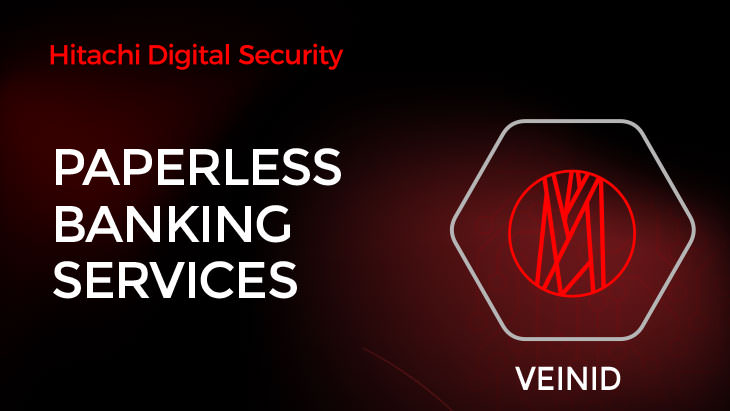
Hitachi paperless banking services reduce costs and improve accuracy
3 Jul 2017
The last time you visited a bank branch, did you find the experience heavily reliant on manual processes and paperwork compared to the experience you have using online and mobile channels? Do you still receive your monthly statements via the post? How do you manage when it comes to confirming or finalising agreements for financial products with your bank?
How about using a mobile biometric system to instantly validate agreements rather than visiting the branch or communicating contractual documents via the post?

The trend for digitalisation in the banking sector marches on with digital currencies, contactless payments, targeted marketing via social media, selfie-pay and so on.
One of the key remaining areas for process improvement in many banks is to banish the use of paper for customer communications and formal agreements. The savings for banks can be considerable and the convenience for customers is greatly improved.
Customers cling to paper copies as they have confidence that a record exists of their transactions amid a fear that the bank will delete their statement data.
Many banks have been actively trying to get their online/mobile users to elect for paperless communications by receiving written communications as electronic documents posted into their online banking accounts. This can lead to problems since the banks need to ensure that all electronically communicated documents can be readily accessible by customers for a pre-determined period of time.
A secure and flexible electronic document store along with a customer portal is needed at the heart of the paperless system; the bank also needs to think about what tools will be used to authenticate the electronic agreements. Digital signatures should be a key part of the process and the right biometric tools can be a great enabler in authenticating those signatures.
According to the regulations on electronic agreements, each party must sign an agreement in the same way for it to be valid and the challenges of ensuring document integrity, non-repudiation and confidentiality must all be respected.
Hitachi worked with a bank with around 4m customers that generates over 200m sheets of paper a year in customer-oriented processes, sends 70m of those sheets out to customers and receives back millions of sheets that need to be processed including checking, validation and storing. You can imagine the costs involved in such a process. This bank set a target to reduce paper in internal processes by 90% and in customer processes by 80%.
According to McKinsey, reduction in costs and improvement in the flow and accuracy of business processes when switching to paperless can yield a positive return on investment and payback within 18 months.
Digital security is a key element in paperless operations for ensuring the safety of all parties for the processing of electronic transactions. Hitachi has a number of leading technologies for enabling of the digital enterprise, including infrastructure for secure management of digital content.
Our finger vein biometrics solution provides a secure, simple to use and reliable method for authenticating digital signatures which can be used to validate and confirm individual banking transactions as well as customer agreements.
Finger vein solutions can be used in traditional branch style environments in “over the counter” mode as well as in mobile channels.
If this sounds like something your bank is interested in then please get in touch with our expert team via: Pretesh.Shah@hitachi-eu.com.
